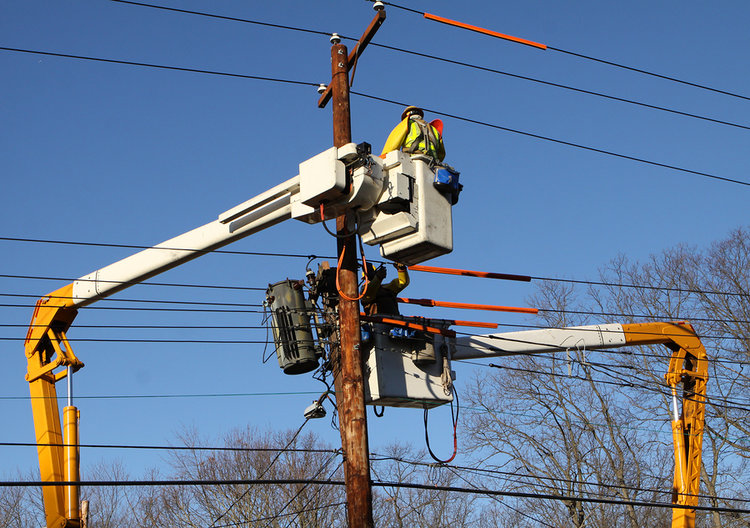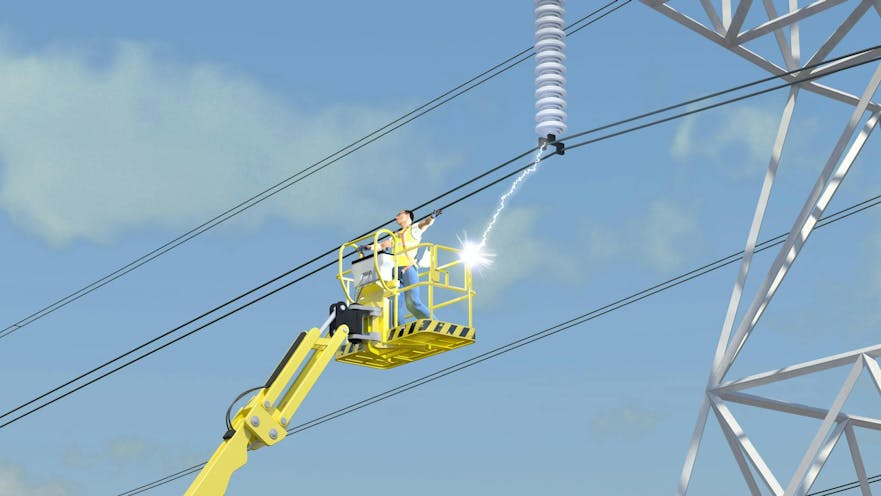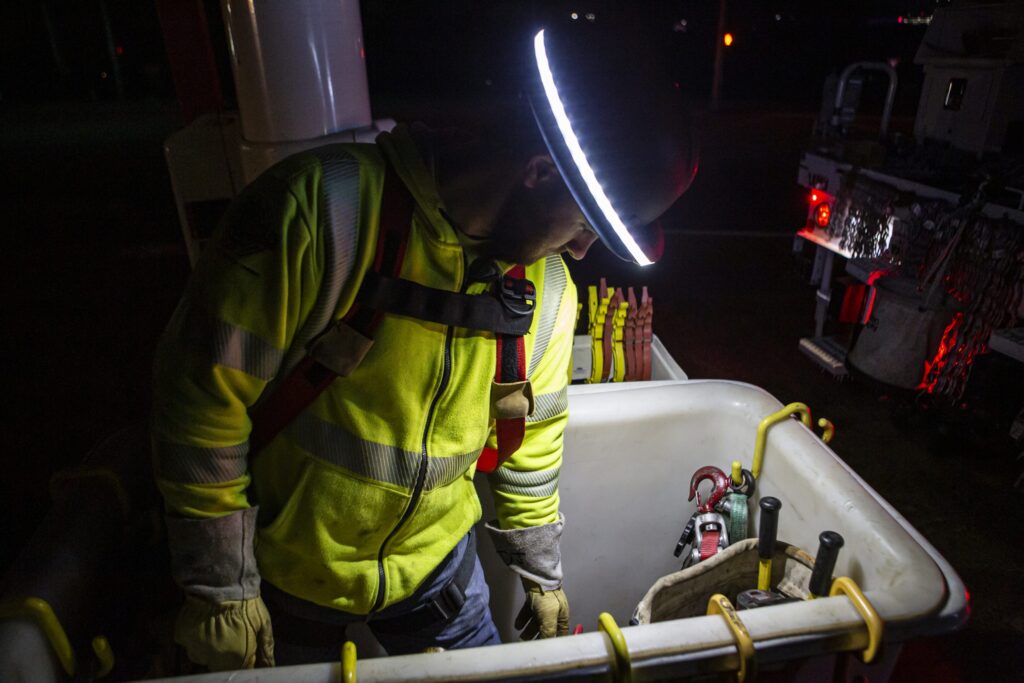Worker electrocution due to high voltage power lines is a major hazard. Discover common causes, safety tips, and preventive measures to protect workers and reduce workplace accidents
Electrocution incidents affect many workers each year. These accidents often result in severe injuries or even death. Understanding the dangers of high voltage power lines is crucial for safety. Workers in construction, maintenance, and utility services face these risks daily.
Proper training and awareness can prevent many of these tragic events. This blog post will explore the causes and consequences of electrocution. We will also discuss safety measures and best practices. Ensuring worker safety around power lines is essential. Let’s dive into the critical information you need to know. Stay informed, stay safe.
Common Causes
Worker electrocution due to contact with high voltage power lines is a serious workplace hazard. Understanding the common causes can help prevent accidents and save lives. Below, we explore some of the most frequent reasons why these incidents occur.
Direct Contact
Direct contact with high voltage power lines is a leading cause of worker electrocution. This often happens when workers are unaware of the power lines’ presence or underestimate the danger. Construction sites, utility work, and tree trimming activities are particularly risky. Workers must always be vigilant and maintain a safe distance from power lines.
Arc Flashes
Arc flashes are sudden electrical discharges that can occur near high voltage power lines. These flashes can cause severe burns and electrocution. An arc flash happens when electricity jumps from one conductor to another through the air. This can be triggered by equipment malfunctions, human error, or poor maintenance. Proper protective gear and safety protocols can reduce the risk of arc flashes.
Equipment Failure
Equipment failure is another common cause of worker electrocution. Faulty tools, damaged cables, or malfunctioning machinery can expose workers to high voltage currents. Regular maintenance and inspections are crucial to ensure that all equipment is in good working order. Employers must invest in high-quality tools and replace any damaged items immediately.
| Cause | Preventive Measures |
|---|---|
| Direct Contact | Maintain safe distance, be aware of surroundings |
| Arc Flashes | Wear protective gear, follow safety protocols |
| Equipment Failure | Regular maintenance, use high-quality tools |
Identifying Hazards
Identifying hazards is crucial in preventing worker electrocution due to contact with high voltage power lines. Understanding potential dangers helps ensure safety protocols are in place. This section will guide you through identifying high-risk areas, weather conditions, and nearby equipment.
High-risk Areas
Certain areas pose a higher risk of electrocution. Construction sites, especially those near power lines, are dangerous. Workers must be aware of the proximity to high voltage lines.
Industrial facilities also present high-risk areas. These locations often have complex electrical systems. Awareness and training are essential to prevent accidents.
Agricultural fields with irrigation systems may have hidden power lines. Workers should receive proper training to identify these hazards.
Weather Conditions
Weather significantly impacts worker safety around high voltage power lines. Rain increases the risk of electrocution. Wet conditions make it easier for electricity to travel.
Lightning is another major hazard. Workers should halt operations during thunderstorms. Safety protocols must include monitoring weather conditions.
Strong winds can cause power lines to swing. This movement increases the danger of accidental contact.
Nearby Equipment
Nearby equipment can also pose risks. Cranes and other large machinery must be operated with caution. Ensure they maintain a safe distance from power lines.
Ladders and scaffolds should be placed carefully. Workers must check the area for power lines before setting up equipment.
Portable tools and machinery need regular inspection. Faulty equipment increases the risk of electrocution.
By identifying these hazards, workers can take proactive measures to stay safe.
Safety Training
Worker electrocution due to contact with high voltage power lines is a serious issue. Safety training is essential to prevent these accidents. Proper training saves lives and promotes a safe working environment. This section will explore the key aspects of safety training.
Employee Education
Employees must understand the dangers of high voltage power lines. Comprehensive education programs can help. They should cover basic electrical safety and the risks involved. Workers need to recognize hazardous situations. They should know how to avoid them. Educational materials should be clear and easy to understand. Visual aids and hands-on examples enhance learning.
Regular Drills
Regular drills help reinforce safety protocols. They prepare workers for emergencies. Drills should simulate real-life scenarios. Practice helps workers react quickly and correctly. They become second nature. Regular practice sessions are crucial. They ensure everyone knows their role. This reduces panic and confusion during an actual emergency.
Certification Programs
Certification programs validate a worker’s knowledge. They ensure workers meet safety standards. These programs often include exams and practical tests. Passing them shows competence in electrical safety. Certified workers are more confident. They are also more aware of safety practices. Employers should encourage certification. It benefits both the worker and the company.

Credit: www.langdonemison.com
Protective Gear
Protective gear is essential for workers exposed to high voltage power lines. It reduces the risk of electrocution and keeps them safe. Each piece of gear has a specific purpose and plays a vital role in protection.
Insulated Gloves
Insulated gloves are crucial for workers handling high voltage equipment. They provide a barrier between the worker’s hands and the electrical current. High-quality insulated gloves can prevent serious injuries. Workers should inspect their gloves for any damage before use. Even a small tear can be dangerous.
Hard Hats
Hard hats protect workers from falling objects and electrical hazards. They are designed to withstand high impacts and prevent head injuries. Some hard hats come with additional features. For instance, some have built-in insulation to guard against electrical shocks. Always ensure the hard hat fits snugly.
Safety Boots
Safety boots are another essential piece of protective gear. They shield the feet from electrical hazards and provide stability on uneven surfaces. Many safety boots have non-conductive soles. This feature helps in reducing the risk of electrical shocks.
Safe Work Practices
Worker electrocution due to contact with high voltage power lines is a serious risk. Adopting safe work practices can help prevent these accidents. This section will cover the most effective practices to keep workers safe.
Maintaining Safe Distance
Always maintain a safe distance from high voltage power lines. This reduces the risk of accidental contact. Here are some key points to remember:
- Stay at least 10 feet away from power lines.
- Use warning signs to indicate danger zones.
- Monitor the work area for any changes.
Using Insulated Tools
Insulated tools are crucial for workers near power lines. These tools prevent electrical current from passing through:
| Tool | Insulation Rating |
|---|---|
| Insulated Pliers | Up to 1000V |
| Insulated Screwdrivers | Up to 1000V |
| Insulated Gloves | Up to 1000V |
Lockout/tagout Procedures
Lockout/Tagout (LOTO) procedures ensure that power lines are de-energized before work begins. Key steps include:
- Identify all power sources.
- De-energize and lock out the power sources.
- Tag the power sources with warning signs.
- Verify that the power is off before starting work.
Following these safe work practices can significantly reduce the risk of electrocution. Always prioritize safety when working near high voltage power lines.
Emergency Response
Workers face electrocution hazards when contacting high voltage power lines. Quick emergency response can save lives and prevent severe injuries. Training and safety measures are crucial in such situations.
Worker electrocution from high voltage power lines is a serious incident. Swift emergency response can save lives and reduce injury severity. Knowing the correct steps to take is crucial.
First Aid Measures
First, ensure your own safety. Do not touch the victim if they are still in contact with the power source. Turn off the power if possible. Use a non-conductive object to separate the victim from the source. Check for breathing and pulse. Begin CPR if needed. Keep the victim still and calm.
Calling Emergency Services
Immediately call emergency services. Provide clear and concise information. Mention the electrocution and the victim’s condition. Stay on the line until help arrives. Follow any instructions given by the operator.
Reporting Incidents
Report the incident to your supervisor. Ensure the incident is documented. This helps in preventing future accidents. File a report with safety authorities. Ensure all details are accurate and thorough. “`
Regulatory Compliance
Regulatory compliance is crucial for preventing worker electrocution from high voltage power lines. Adhering to guidelines and regulations can save lives and reduce accidents. This section discusses the key aspects of regulatory compliance.
Osha Guidelines
The Occupational Safety and Health Administration (OSHA) sets strict rules. These rules ensure worker safety near high voltage power lines. Employers must follow OSHA standards to protect their workers.
OSHA guidelines require proper training for workers. They must know how to handle electrical equipment safely. Workers also need to wear protective gear. This gear includes insulated gloves and helmets.
Local Regulations
Local regulations vary by region. They complement OSHA guidelines. These rules may include specific safety measures. For example, some areas require more frequent safety inspections.
Local authorities may also mandate special permits. These permits ensure that only qualified workers deal with high voltage lines. Following local regulations helps prevent accidents and ensures compliance.
Company Policies
Each company should have its own safety policies. These policies often exceed OSHA and local requirements. They include detailed safety procedures and regular training sessions.
Companies should conduct regular safety audits. These audits identify potential hazards. They also ensure that workers follow all safety protocols. Strong company policies foster a culture of safety.
Technological Solutions
Worker electrocution due to contact with high voltage power lines is a serious concern. Thankfully, there are several technological solutions available to reduce these risks. These solutions can help protect workers and save lives.
Proximity Warning Devices
Proximity warning devices are essential for worker safety. These devices alert workers when they are near high voltage power lines. They use sensors to detect dangerous zones and sound an alarm.
The benefits of proximity warning devices include:
- Real-time alerts that warn workers instantly
- Prevention of accidents before they happen
- Reduction in workplace injuries and fatalities
Personal Voltage Detectors
Personal voltage detectors are small, portable devices worn by workers. These detectors sense high voltage electricity and alert the wearer. They are crucial for workers in high-risk areas.
Features of personal voltage detectors:
| Feature | Benefit |
|---|---|
| Lightweight | Easy to carry and wear |
| Audible alarms | Immediate alert to danger |
| Visual indicators | Clear warning signals |
Remote-controlled Equipment
Remote-controlled equipment keeps workers safe by allowing them to operate machinery from a distance. This reduces the risk of direct contact with high voltage power lines.
Advantages of using remote-controlled equipment:
- Enhanced safety by keeping workers away from danger zones
- Improved control and precision
- Reduced risk of accidents
Implementing these technological solutions is crucial for enhancing worker safety. They provide effective ways to prevent electrocution and ensure a safer working environment.

Credit: www.rermag.com
Frequently Asked Questions
What Causes Worker Electrocution?
Worker electrocution often occurs from direct contact with high voltage power lines. Lack of proper safety measures is another common cause.
How To Prevent Electrocution At Work?
Proper training and safety equipment can prevent electrocution. Always maintain a safe distance from high voltage lines.
What Are High Voltage Power Lines?
High voltage power lines carry electricity at extremely high voltages. They are usually used for long-distance transmission.
What To Do If A Worker Is Electrocuted?
Immediately disconnect the power source. Call emergency services and administer first aid if trained.
Conclusion
Worker electrocution from high voltage power lines is a serious issue. Safety measures can save lives. Training and awareness are essential. Always use proper protective equipment. Keep a safe distance from power lines. Employers must enforce strict safety protocols. Workers should never take shortcuts.
Stay vigilant and prioritize safety. Reducing risks ensures everyone goes home safely. Let’s work together for a safer workplace.
PEOPLE ALSO READ


